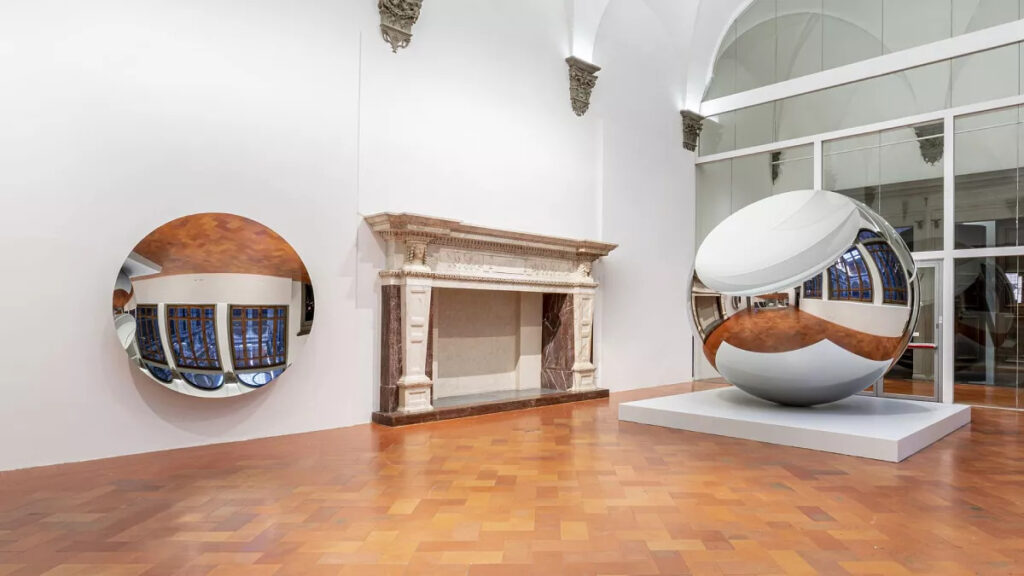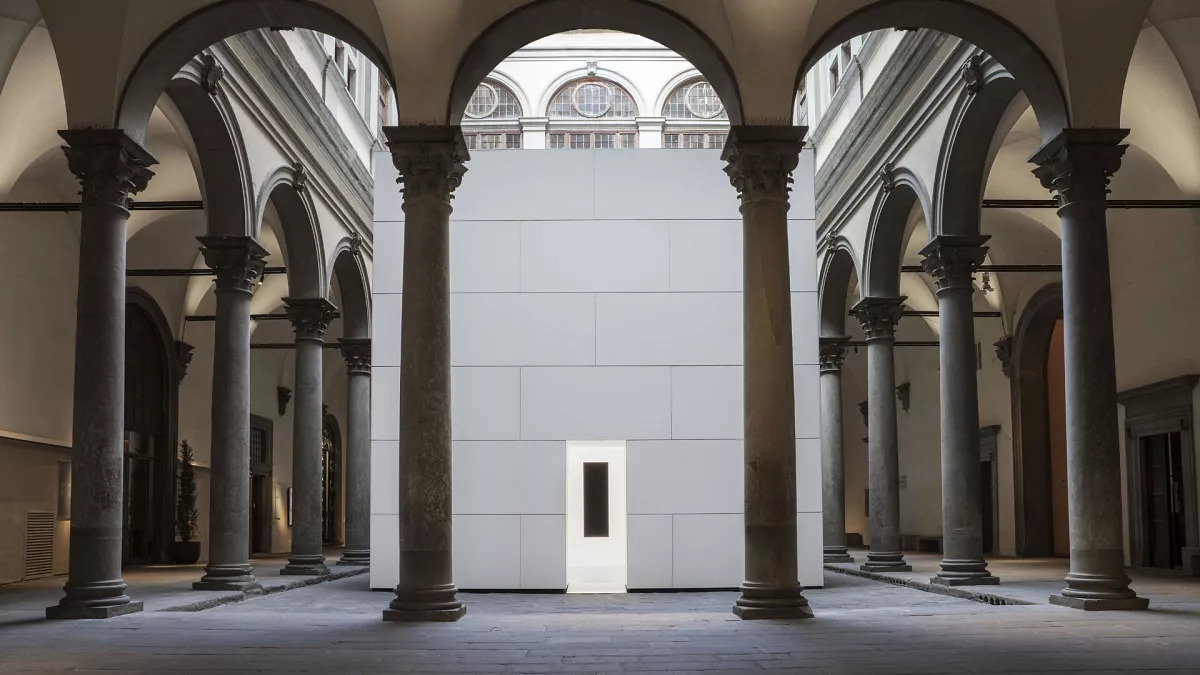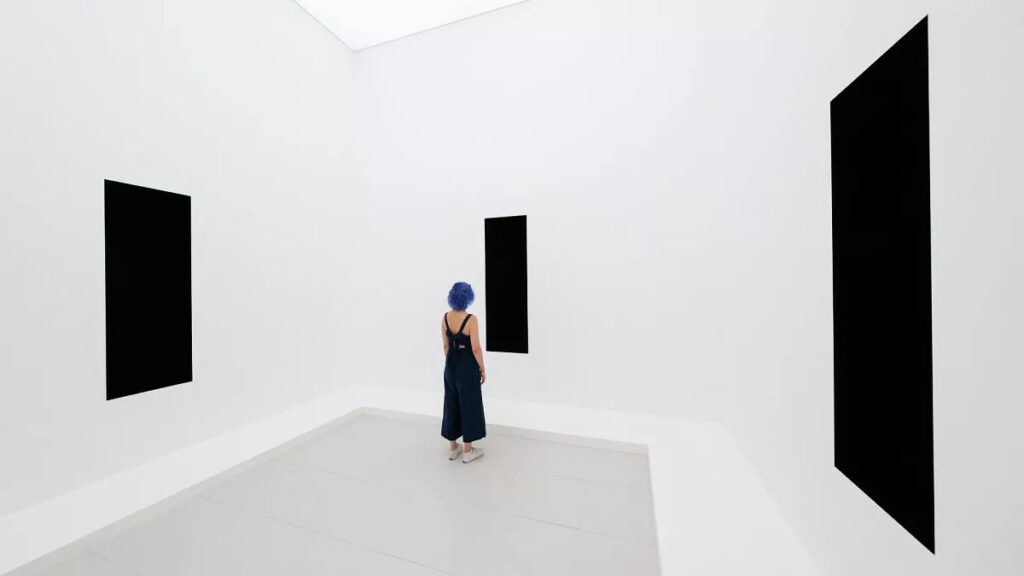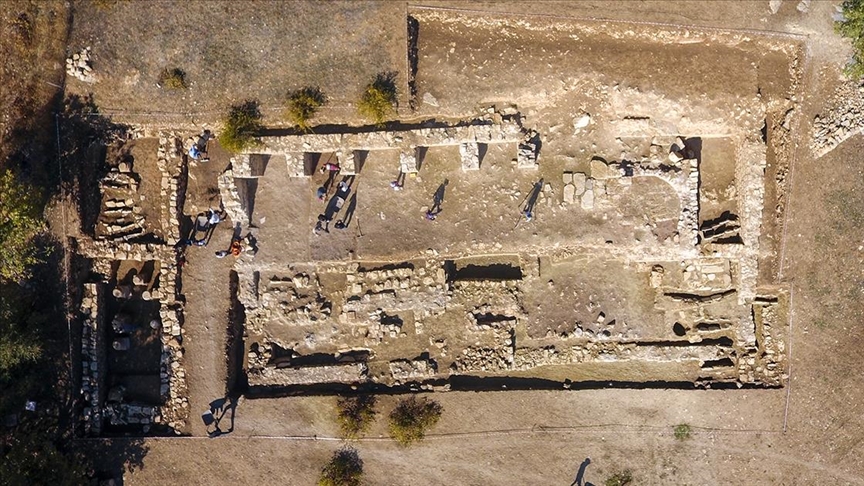A new major exhibition, currently gracing the historic Palazzo Strozzi in Florence, is showcasing a large collection of both new and existing works by the artist, tracing the entire arc of Anish Kapoor’s career.
‘Untrue Unreal’, meticulously curated by Arturo Galansino, the director general of the Fondazione Palazzo Strozzi, invites spectators to delve into an invasive world where Kapoor’s large-scale sculptures and installations blur the line between reality and illusion.

“It’s all about contingent realities. Much of this show has so-called void objects, empty objects in it. But in fact, none of them are empty. They’re all either full of darkness or full of mirror,” Kapoor told Euronews Culture at the opening of the exhibition.
Stepping into the stunning Palazzo Strozzi, located in the heart of Florence, visitors are immediately greeted by a grand-scale installation titled Void Pavillion VII, which was exclusively conceived for the magnificent Renaissance courtyard.
“In the courtyard, what I’ve done is build a white cubed building which I hope reflects the geometry of what is there, works with it, and you’re required in a sense to walk into it. Within it, there are three objects, three non-objects, and three half-objects that I hope to engage. Confuse.” Kapoor told Euronews Culture.

The installation is very impressive. It could represent both an ancient human-built shrine or an artefact from a future alien civilisation. And it’s one of the many instances where Kapoor works with the Strozzi palace’s existing space to enhance his creations.
The show unfolds across several gallery spaces, guiding visitors through Kapoor’s multifaceted artistic output, from his disorientating mirrored sculptures to his visceral, blood-red installations.
Among the colossal works on display is the well-known Svayambhu (2007) – a massive block of ever-so-slowly moving blood-red wax, traversing between two rooms of the Palazzo Strozzi and leaving a trail of messy wax remnants in its wake. It’s brutal in its appearance but mesmerising to observe.
As you explore further, you’ll find the delicate To Reflect an Intimate Part of the Red (1981), a seminal work by Kapoor characterised by vibrant yellow and red pigment forms, which sit gracefully on the floor. They appear remarkably otherworldly and fragile – as if they could shatter at the slightest breath of wind.








